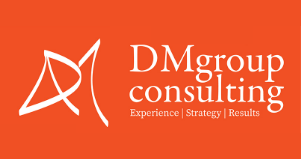A successful fundraising plan is more than just collecting donations. It’s about building lasting relationships and creating meaningful connections between your nonprofit and its supporters. Every nonprofit, big or small, benefits from having a clear and structured plan to guide their fundraising efforts. This plan ensures you not only meet your financial goals but also strengthen your impact on the community you serve.
Crafting a detailed plan starts with setting clear fundraising goals that match your mission. Understanding your donors is crucial for customizing your approach to meet their interests and preferences. A strong outreach strategy keeps your audience engaged and informed about the positive changes their contributions support. Regularly monitoring and tweaking your efforts based on results ensures continuous improvement and success.
When each of these elements works together, they create a comprehensive roadmap for nonprofit success. This roadmap not only helps in securing the necessary funds but also builds trust and credibility with donors. Ultimately, a solid fundraising plan empowers your nonprofit to further its mission and bring about real change.
Setting Clear Fundraising Goals
Setting clear fundraising goals is essential for guiding your nonprofit’s efforts. Start by defining specific and measurable objectives. Clear objectives provide a concrete target and make it easier to track progress. For example, instead of saying “raise more money,” aim to “increase donations by 20% in the next year.” Specific goals give teams a clear direction and help align all efforts toward a unified aim.
Differentiate between short-term and long-term goals. Short-term goals usually focus on immediate needs, such as funding for an upcoming event or campaign. Long-term goals, on the other hand, are broader and might encompass overall growth or sustained support over several years. This distinction helps in planning and resource allocation, ensuring that immediate priorities are met without losing sight of future objectives.
Ensure your fundraising goals align with the nonprofit’s mission. When goals reflect the mission, it becomes easier to communicate their importance to donors. This alignment also keeps the organization focused on its core purpose, ensuring that the resources raised are used effectively to further the nonprofit’s goals. This connection between mission and objectives is important for both organizational clarity and donor trust, fostering a sense of shared vision and collaboration.
Understanding Your Donor Base
Understanding your donor base is key to developing effective fundraising strategies. Start by segmenting donors based on interests and giving patterns. Donor segmentation allows you to tailor your communications and fundraising efforts to specific groups, increasing the relevance of your message. For example, some donors might support educational initiatives, while others might focus on health-related projects. Knowing who your supporters are and what they care about helps you engage them more effectively.
Research donor behavior and preferences to guide your engagement strategy. Look into past donation histories, preferred communication channels, and the frequency of their contributions. This research provides insights into how and when to approach donors for maximum impact. Tailoring your approach based on this understanding helps build stronger connections with donors by making them feel valued and understood.
Develop tailored engagement strategies for each donor segment. Each group may respond differently to various methods of engagement, such as personalized emails, phone calls, or in-person meetings. Make sure your strategies resonate with their interests and communication preferences. By customizing interactions, you create a more meaningful experience for donors, fostering long-term relationships and encouraging continued support. Tailored strategies ensure donors feel appreciated and are vital in building a lasting partnership.
Crafting a Strong Outreach Strategy
To succeed in fundraising, crafting a strong outreach strategy is essential. Start by utilizing multiple communication channels. This includes email, social media, direct mail, and events, ensuring you reach your audience where they are most comfortable. Using a mix of these channels allows you to connect with different donor segments effectively and keeps the message fresh and engaging.
Creating compelling fundraising messages is another cornerstone of your outreach strategy. These messages should be clear, direct, and emotionally resonant. Tell stories about the impact donations are having, making the donors feel they are a part of something meaningful. Good storytelling can motivate and inspire people to give more.
Schedule regular updates and interactions with your donors. This might mean sharing newsletters, hosting webinars, or organizing in-person meetings. Regular communication keeps donors informed and engaged, showing them how their contributions are making a difference. It also builds trust and a sense of community, encouraging continued support and involvement. By maintaining an active dialogue, you can foster long-term relationships that are crucial for sustained fundraising success.
Monitoring and Evaluating Fundraising Efforts
Effectively monitoring and evaluating your fundraising efforts is crucial. Begin by establishing key performance indicators (KPIs). These metrics could include the amount of funds raised, donor retention rates, or the success of specific campaigns. Having clear KPIs helps you understand if you are meeting your goals and where to focus your efforts for improvement.
Use data and feedback to assess progress. Collect feedback from donors and volunteers to understand their experiences and views. This information provides valuable insights into what is working well and what needs refining. Analyzing data helps you pinpoint trends and patterns in giving, allowing you to fine-tune your strategies accordingly.
Adjust strategies based on evaluation results. Regular reviews help you identify which methods effectively reach and resonate with your audience. Adjusting your approach ensures you remain relevant and impactful. It’s important to be flexible: strategies might need to change as your organization grows and the fundraising landscape evolves. This adaptability keeps your nonprofit responsive to challenges and opportunities, ultimately enhancing your fundraising success.
Conclusion
Keeping your nonprofit’s fundraising strategy updated is key to sustaining growth and impact. Each element, from setting clear goals to understanding your donors, plays a vital role in building strong connections with supporters. With the right outreach strategy and regular evaluations, your organization can adapt to changes and continue making a positive difference in the community.
As your nonprofit moves forward, always align your efforts with your mission and the interests of your donors. This ensures that every campaign not only meets immediate needs but also fosters long-term relationships and support. Remember, an updated strategy is a living document, evolving as your organization grows and as trends shift.
Updating your nonprofit fundraising strategies requires expertise and insight. At DM Group Consulting, we provide the guidance and tools needed for effective planning and execution. Whether you’re refining your methods or starting anew, we’re here to help you succeed in fundraising. Reach out to us today and let’s work together to ensure your nonprofit thrives.




